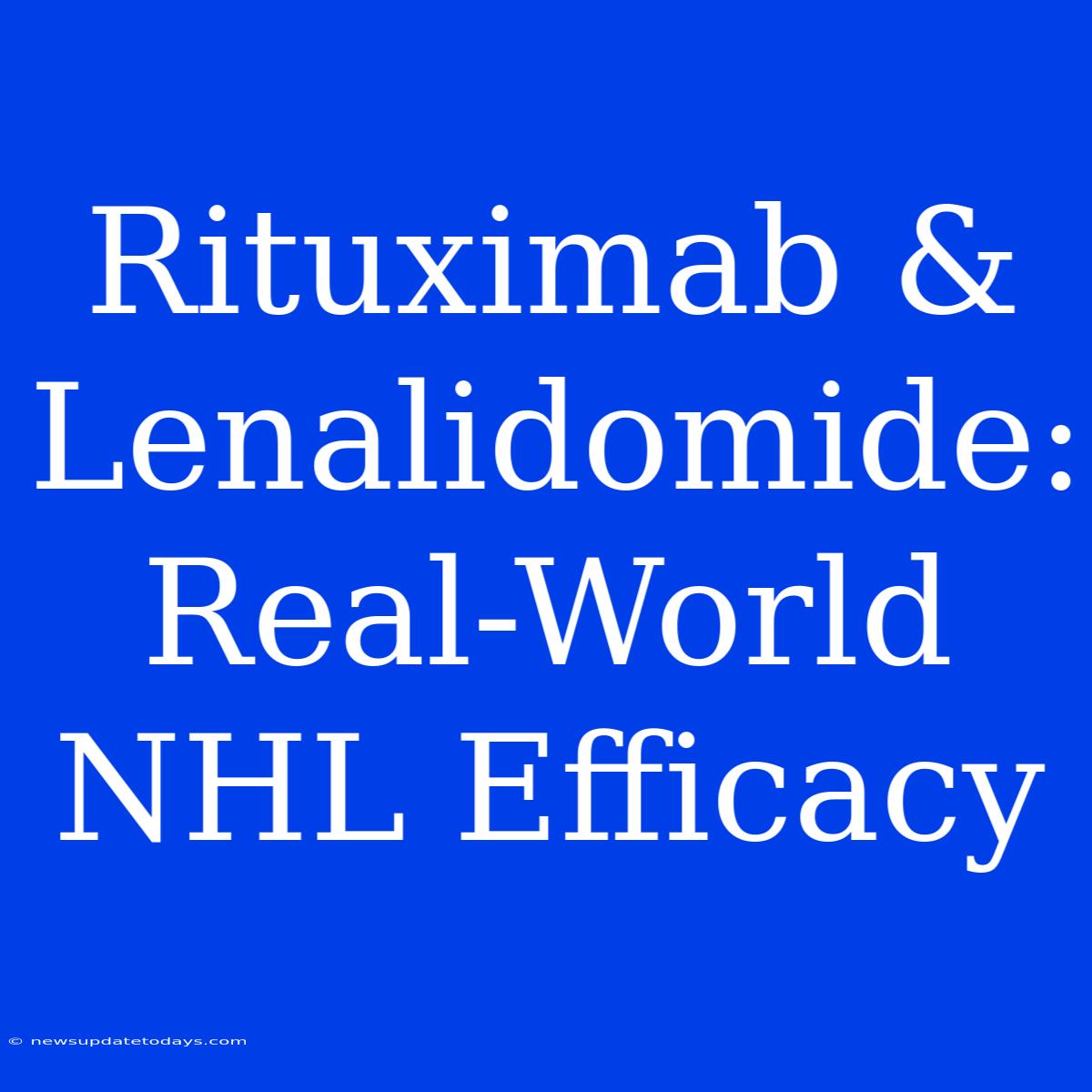Rituximab & Lenalidomide: Real-World Efficacy in Non-Hodgkin Lymphoma (NHL)
Rituximab and lenalidomide, individually powerful agents in the fight against Non-Hodgkin Lymphoma (NHL), demonstrate even greater efficacy when combined. While clinical trials showcase promising results, understanding their real-world performance is crucial for oncologists and patients alike. This article delves into the real-world efficacy of this combination therapy, exploring its benefits, limitations, and ongoing research.
Understanding the Synergy: Rituximab and Lenalidomide in NHL
Rituximab, a monoclonal antibody targeting the CD20 antigen on B-cells, depletes cancerous B-cells. Lenalidomide, an immunomodulatory drug (IMiD), enhances the immune response against lymphoma cells and directly inhibits tumor growth. The combination leverages their synergistic effects for superior outcomes.
Real-world data increasingly shows that this regimen boasts significant improvements in:
- Overall Response Rate (ORR): Studies indicate higher ORR compared to rituximab alone, particularly in specific NHL subtypes.
- Progression-Free Survival (PFS): Patients often experience longer periods without disease progression.
- Overall Survival (OS): While more research is needed, preliminary data suggests a potential increase in overall survival.
Challenges and Considerations in Real-World Application
Despite the promising results, the real-world application of Rituximab and Lenalidomide faces certain challenges:
- Toxicity Profile: The combination can lead to increased side effects, including neutropenia (low white blood cell count), thrombocytopenia (low platelet count), and fatigue. Careful patient selection and monitoring are essential.
- Patient Population: Real-world studies encompass a broader patient population with varying clinical characteristics compared to highly selected clinical trial participants. This can influence the observed efficacy.
- Treatment Access and Affordability: The cost of these medications can pose a significant barrier to access, particularly in resource-limited settings.
Ongoing Research and Future Directions
The efficacy of Rituximab and Lenalidomide continues to be investigated in various contexts:
- Subgroup Analysis: Research focuses on identifying patient subgroups who benefit most from this combination therapy. This includes exploring its effectiveness based on age, specific NHL subtypes, and other clinical factors.
- Combination with Other Agents: Studies are exploring the potential benefits of incorporating this regimen into more complex treatment strategies, potentially improving outcomes even further.
- Biomarker Identification: Research seeks to identify biomarkers that can predict patient response to the combination therapy, enabling better patient selection and personalized treatment strategies.
Conclusion: Real-World Implications of Rituximab & Lenalidomide
The combination of Rituximab and Lenalidomide offers a significant advancement in NHL treatment. While real-world data confirms its efficacy, careful consideration of its toxicity profile and patient selection remain crucial. Ongoing research will further refine our understanding of this powerful combination, paving the way for more personalized and effective treatment strategies for NHL patients. Further investigation into cost-effectiveness and equitable access is also paramount to ensuring optimal patient outcomes.

